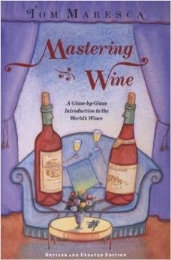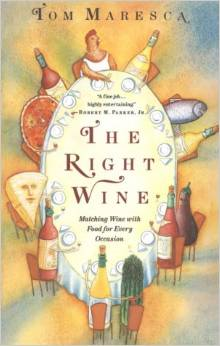Everybody needs everyday wines, especially at this time of year. But make no mistake: My emphasis is on good everyday wines, not just anything because it’s cheap. Obviously, inexpensiveness is an added attraction, but goodness comes first. I long ago decided that life is too short to ever drink mediocre wine, so even though I could never afford those legendary, crème de la crème bottles that headline so many ads, I’ve worked hard to ensure that the wines that accompany my daily bread are pleasurable, respectably made, and honorable examples of their breed.
What I’m going to talk about now are some wines that I can pretty reliably find in my vicinity. Let me offer a caveat about that: With the vagaries of importation and distribution, the variations of harvests, both qualitatively and quantitatively, compounded by the impact that Covid has had all around the world, none of us can ever be sure that the wine that is in shops this week will be available anywhere next month. That said, here are some wines that I have been enjoying for a few months now and hope to continue drinking for a good while yet.
.
Whites
.
A staple white wine that I can almost always get because it’s from close to home is Paumanok Vineyards’ Festival Chardonnay. If worse comes to worst, I can drive out to Long Island’s North Fork and carry some home from the vineyard. This wine is everything that basic, unoaked Chardonnay ought to be. Fresh and vigorous, with lovely, clean fruit and a sound structure, it will serve as an aperitif wine as pleasantly as it accompanies dinner. True to its Long Island heritage, it especially loves fish and shellfish.
Another equally versatile white wine is Pra’s beautiful Soave Classico Otto. Many people underestimate Soave. This wine shines with an intense minerality that will remind those drinkers of a really nice Chablis. The ones who already know Soave’s many virtues will appreciate the fruit and life and balance of this fine example of the breed. It may be my favorite Soave of them all, and I don’t exclude Pieropan from that consideration. Certainly, for everyday drinking, and in its price range, it’s matchless.
One more Italian white wine has recently become available in my area: the charmingly and appropriately named Il Gentiluomo, a 100% Cortese wine from Paolo Pizzorni, in the Monferrato zone of the Piedmont. I’m hoping this one stays in the market for a while, because it is a lovely, simple wine, medium-bodied and deliciously fruity, with excellent balance. It works with all sorts of light dishes from meat antipasti to roasted chicken. It particularly loves veal in all forms, from scallops to roasts.
We used to keep a lot of basic white Burgundies around for everyday use: They have a combination of fuller body and terroir character that makes them quite distinctive and intriguing. But Burgundy prices have begun another of their periodic ascents into the stratosphere. While there are still a good number of wines suitable for everyday use, their price now makes that inadvisable for most people. Your best hope, if you must have a Burgundy (and who, occasionally, does not?), will be to look for wines from Mâcon or Mâcon-Villages, but you will have to shop sharply.
You would be better advised to shift your attention northward to Alsace, where almost every producer offers a basic blended wine at an attractive price. Hugel’s Gentil is an excellent example of the breed, enjoyable in itself and extremely versatile with food.
.
Reds
.
Red wines offer more questions and more choices. After all, the wines range from light and understated to formidable, and the foods they’re asked to accompany are similarly varied in intensity and spicing. Especially in warm weather, I like to keep some Beaujolais on hand. The crus are my favorites – Fleurie, Juliénas, Chiroubles, Morgon, Chénas – but I also have a fondness for Jean-Paul Brun’s Terre Dorée basic Beaujolais, L’Ancien, which has plenty of character to pair with its charm and vivacity. His cru wines are also fine, but there are now many good producers of those available, so it is worth trying several to see whose style pleases you.
Still in the French range, Côtes du Rhône wines are always useful. The named villages are best, though they can get pricy – but careful shopping will almost always net you a Gigondas or Vacqueyras at a decent price. There are many makers, some quite small operations, so it’s impossible to predict what will be in any particular market, but IMO they’re all worth a try.
We drink a lot of Italian reds at casa Maresca, and it’s a frequently changing cast of characters, depending on what’s available. Distributors seem to have synchronized cycles: One season the shops will be filled with Tuscan wines, another it will be Piedmonts, with other regions’ reds getting whatever shelf space is left. That’s a shame, because there are fine, inexpensive red wines pouring out of every part of Italy, and a high percentage of them are well worth a taste.
I like to keep a lot of basic Chianti Classico around because of Sangiovese’s versatility with food, and there are many good ones available at quite decent prices, particularly the best wines of the best co-ops, which lack the prestige and therefore the market clout of the best estate wines. Lately I’ve been drinking with great pleasure a lot of Clemente VII and Panzano, both produced by Castelli del Grevepesa.
Equally adaptable with a whole range of foods is Barbera. This is a grape that, because of its naturally high acidity, can happily match with almost anything. For my palate, the greater body and more restrained acidity of Barbera d’Alba works best, but Barbera d’Asti, often accurately described as “racy,” has many partisans. There are many makers of both kinds, ranging from some of the most famous names in the zone (Ceretto, Gaja, Vietti) to some of the smaller growers (Oddero, Barale), and prices can consequently be all over the place, but patient shopping can usually reward with a really pretty wine at an attractive price.
When it comes to softer, less acidic everyday reds, you’ve got good choices from all over Italy. Here are my current favorites.
.
.
- Dolcetto, from the same zones as Barbera and from many of the same makers – but look for Dogliani, a subzone so distinguished that it has won the right to use its own name rather than Dolcetto.
. - Valpolicella Classico, not Superiore, and definitely not Ripasso. The Classico has rediscovered the simple charm that once made Valpolicella one of Italy’s most popular wines. Brigaldara makes a nice one.
. - Lacryma Christi, from the slopes of Vesuvius, a soft-bodied, round, and mineral-inflected wine that matches wonderfully with pasta and pizza and sauced or braised meats. There are now a fair number of producers intermittently available in the US, but you will never go wrong with a bottle from Mastroberardino, the once – and maybe future – king of Campanian wines.
.
Let us hope that the new year brings us whole tides of enjoyable, affordable wines like these. Covid and its consequences aside – this too shall pass – we are blessed to live in a golden age of winemaking, and there is no reason not to enjoy this abundance while it and we last.














